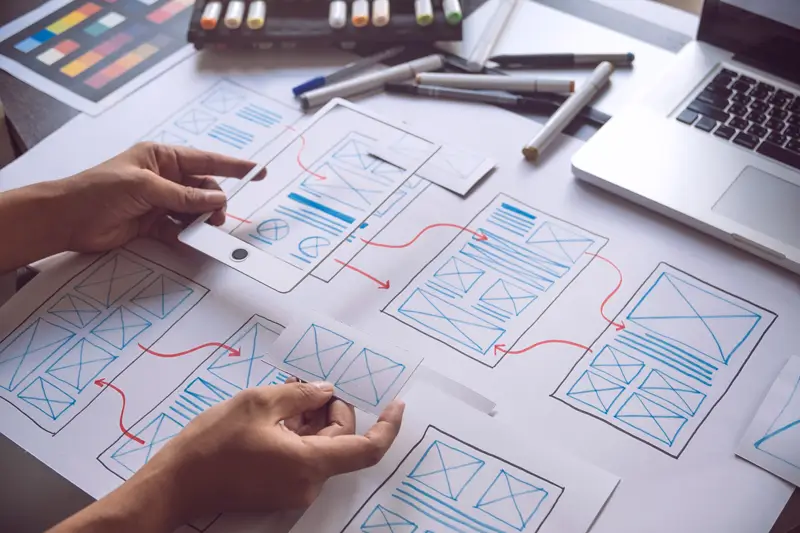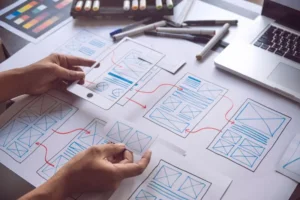In today’s digital landscape, creating an effective online presence is essential for businesses seeking to engage their audience and drive conversions. However, many organizations often confuse the roles of User Interface (UI) and User Experience (UX) design. Understanding the distinction between these two fields is crucial when deciding which professional to hire for your team. While it’s common to encounter individuals claiming to be “UI/UX designers,” it’s important to note that it is rare for anyone to excel in both roles simultaneously. This article will clarify the differences between UI and UX, helping you identify the right role for your business and guiding creative individuals on where they might fit best.
What is User Interface (UI) Design?
User Interface (UI) design focuses on the visual elements of a product—essentially, what users see and interact with. It encompasses the design of buttons, icons, spacing, typography, colors, and overall aesthetics. UI designers are responsible for ensuring that the interface is visually appealing, consistent, and aligned with the brand’s identity. Their goal is to create an intuitive layout that makes navigation straightforward and enjoyable for users.
Key Responsibilities of UI Designers:
- Designing visually engaging layouts that enhance the aesthetic appeal of a product.
- Creating interactive elements like buttons and icons that encourage user engagement.
- Ensuring consistency across all visual components of the product.
- Collaborating with UX designers to translate wireframes into visually appealing interfaces.
What is User Experience (UX) Design?
User Experience (UX) design, on the other hand, is concerned with the overall experience a user has when interacting with a product. This includes everything from the ease of navigation and functionality to how the product meets the user’s needs. UX designers conduct research to understand user behavior, creating user personas and journey maps to identify pain points and opportunities for improvement. Their goal is to enhance user satisfaction by making the product as intuitive and efficient as possible.
Key Responsibilities of UX Designers:
- Conducting user research to gather insights about user needs and preferences.
- Developing user personas and journey maps to visualize user interactions.
- Creating wireframes and prototypes to test ideas and gather feedback.
- Collaborating with UI designers to ensure that the visual elements align with the overall user experience.
The Key Differences Between UI and UX
Focus
- UI: Concentrates on the visual aspects and the look and feel of the product.
- UX: Focuses on the overall experience and usability of the product.
Skills Required
- UI Designers: Need strong skills in graphic design, typography, color theory, and visual storytelling.
- UX Designers: Require skills in research, user testing, information architecture, and analytical thinking.
Tools Used
- UI Tools: Sketch, Adobe XD, Figma, and InVision for creating high-fidelity designs.
- UX Tools: UserTesting, Optimal Workshop, and Axure for research and prototyping.
Which Role Does Your Business Need?
When deciding whether to hire a UI or UX designer, consider your current needs:
- If your primary concern is enhancing the visual appeal of your website or application and improving how users interact with it visually, you may want to prioritize hiring a UI designer.
- If your focus is on understanding user behavior and optimizing the overall experience, then a UX designer should be your first choice.
For many businesses, both roles are crucial to the success of a product. If your budget allows, consider hiring both a UI and UX designer to create a well-rounded team that can address both the visual and experiential aspects of your product.
Clarifying the Misconception
It’s important to acknowledge that while many individuals market themselves as “UI/UX designers,” true expertise in both areas is rare. UI and UX design require different skill sets, mindsets, and areas of focus. Hiring a specialist in each field will ensure that your project benefits from dedicated expertise, resulting in a product that excels in both visual appeal and user experience.
For Creative Individuals: Where Do You Fit In?
If you’re a creative individual trying to determine where you fit in, consider your strengths and interests. If you enjoy working with visuals, layouts, and aesthetics, UI design might be the right path for you. On the other hand, if you’re passionate about understanding users, conducting research, and improving functionality, UX design may be a better fit.
Ultimately, both UI and UX play essential roles in creating successful products. By understanding the differences between these two fields, businesses can make informed hiring decisions, and creative individuals can align their skills with the right opportunities.
Conclusion
In the competitive digital landscape, understanding the distinction between UI and UX design is vital for businesses seeking to enhance their online presence. By hiring the right professionals and aligning their skills with your business goals, you can create a product that not only looks great but also delivers an exceptional user experience. Whether you’re a business owner or a creative professional, knowing the differences between these roles will help you navigate your path to success.






